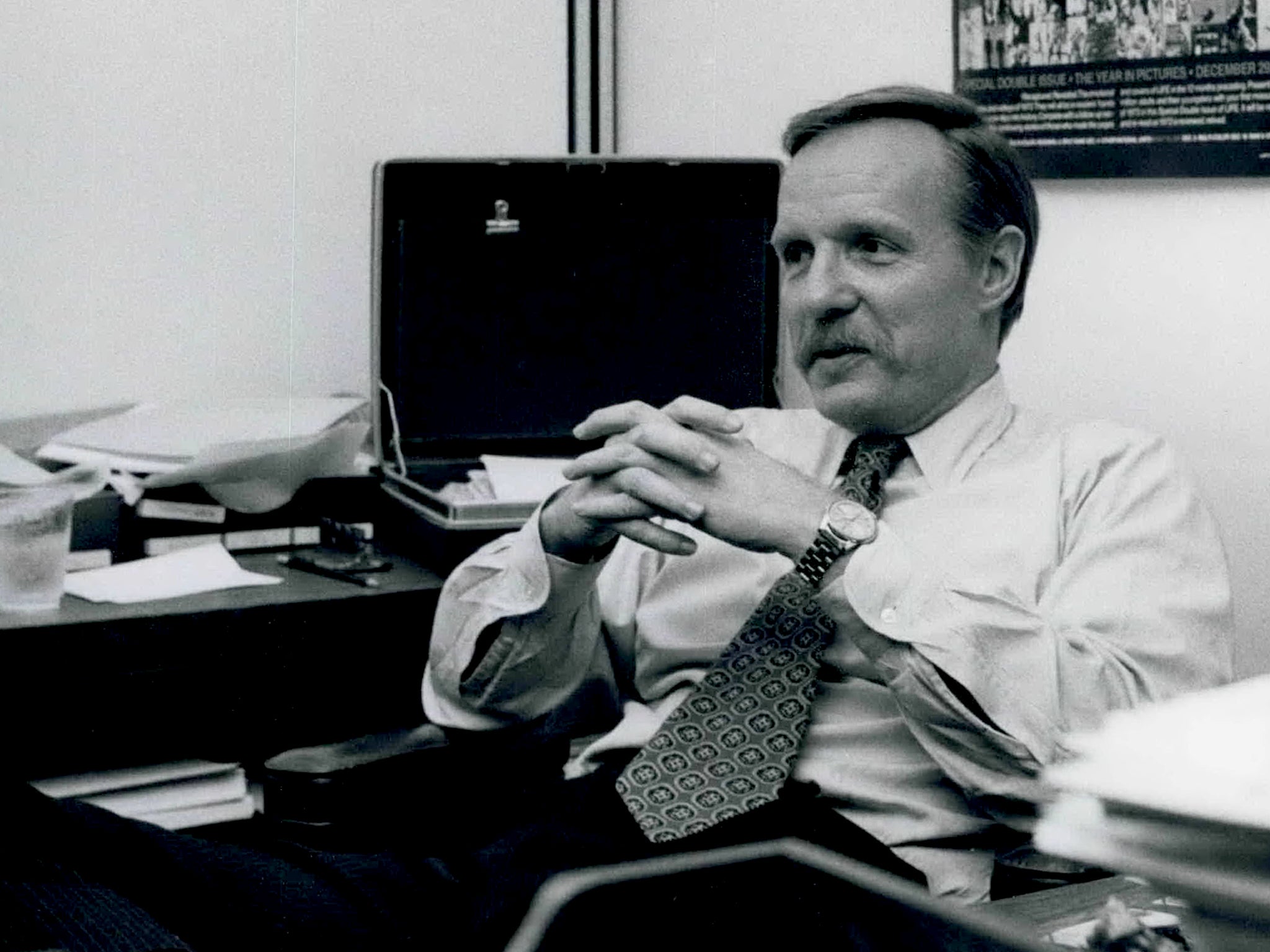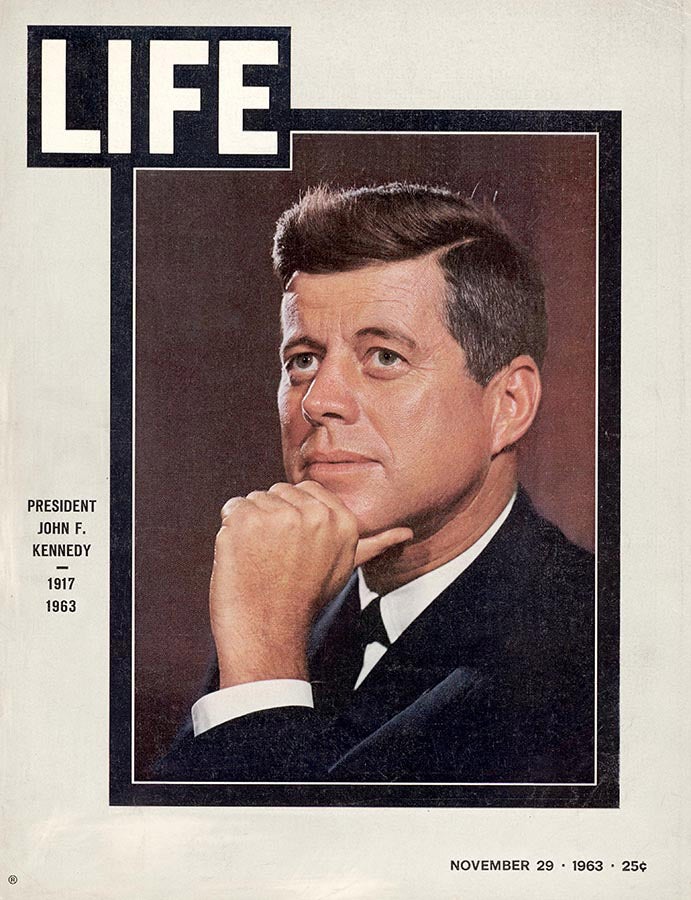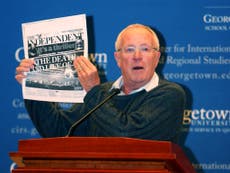Richard Stolley: Newspaper juggernaut who launched People magazine
The Illinois journalist, who acquired the first footage of JFK’s assassination, worked on some of the world’s most influential publications

Richard Stolley, a journalist who left an indelible imprint on two of the most influential American magazines of the 20th century, obtaining a copy of the Zapruder film footage of US President John F Kennedy’s assassination for Life in 1963 and later building a newsstand juggernaut as the founding editor of People, has died aged 92.
An inveterate newsman, Dick Stolley became sports editor of his hometown Illinois newspaper during high school and spent nearly his entire six-decade career with Time Inc, the publishing empire that held the attention of millions of Americans with such magazines as Life, renowned for its riveting photography, and Time.
People, which was spun off from a celebrity section of Time in 1974, reached a circulation of 2.35 million readers during Stolley’s eight years as managing editor and became the most profitable magazine in the US. To sophisticates who thumbed their noses at its friendly interviews with stars, Stolley defended his publication as one that “covers humankind in a way no other magazine does”.
The success of People, he observed, was proof that the 1970s was not only the “Me Decade”, as the writer Tom Wolfe memorably dubbed the era, but also the “You Decade”, marked by an insatiable appetite among readers for glimpses of “extraordinary people doing ordinary things, and ordinary people doing extraordinary things”. (So went People’s motto.)
Stolley owed what he described as the “single most dramatic moment” of his career to one such ordinary person who found himself in extraordinary circumstances: Abraham Zapruder, an immigrant dressmaker who, with his 8mm camera, captured Kennedy’s assassination in Dallas.
Stolley, then serving as Life magazine’s Los Angeles bureau chief, hopped on a plane to Dallas to cover the events. Hordes of journalists had descended on the city, all vying for the latest scoop. Through “a combination of purposeful hustling and amazingly good luck”, Loudon Wainwright wrote in his history of Life, titled The Great American Magazine, Stolley ran down one of the greatest scoops of them all.
By Stolley’s account, an enterprising stringer for Life alerted him to the existence of amateur film footage documenting the moment when Kennedy was shot. She could not spell the photographer’s surname but told Stolley that it was pronounced Za-proo-der. Thumbing through the Z pages of the phone book, Stolley came upon the entry “Zapruder, Abraham”.
He called, again and again, every 15 minutes, until sometime around 11pm, Zapruder answered in what Stolley described as a “weary” voice.
“I identified myself,” Stolley recalled in an account published in the Peoria Journal Star of Illinois. “And I said, ‘Mr Zapruder, am I the first reporter to call you?’”

Zapruder replied that he was. Stolley asked if he could come to Zapruder’s home right away to view the film footage, but Zapruder said no, explaining that he was exhausted from the day’s tragedy.
“I didn’t press,” Stolley wrote. “Sometimes in this business, you know, you have to press, and sometimes there’s a sixth sense that tells you don’t press. Smartest decision I ever made.”
They agreed to meet at 9am the following morning. In another wise decision, Stolley showed up an hour early, before other reporters arrived. Sitting with Zapruder and two Secret Service agents, Stolley viewed the 26 seconds of footage that would become some of the most famous and contested bits of film in American history.
Life did not pay interviewees for access, but the magazine did pay for exclusive photographs. In delicate negotiations, as other journalists jostled outside, Stolley offered Zapruder $50,000 in exchange for print publication rights – an amount later increased to $150,000 for all rights – along with the promise that Life would not exploit the graphic imagery. Zapruder agreed.
The magazine published 31 frames from the footage – but not the one in which Kennedy’s head can be seen exploding from the impact of the bullet. Decades later, after he had seen the film an untold number of times, Stolley told the Albuquerque Journal of New Mexico that he still could not watch that moment without feeling his heart skip a beat.
“In terms of public record, I think it is very fortunate I found Mr Zapruder,” he said in 2013. “I think the film helped impress upon the American people that he was dead … A still picture wouldn’t have done that.”
(Zapruder died in 1970. In 1999, the federal government paid his heirs $16m for the original film, which Life had returned for $1, and which is now in the custody of the National Archives.)
Stolley, who had also covered the civil rights movement and the space race before ascending through the editorial ranks at Life, described the end of the magazine’s weekly run in 1972 as a “devastating blow”. Two years later, he was selected to run People, a magazine that he envisioned not as a purveyor of “celebrity journalism” but rather as a source of “personality journalism”.
“People will focus entirely on the active personalities of our time – in all fields,” he wrote in his first editor’s note. “On the headliners, the stars, the important doers, the comers, and on plenty of ordinary men and women caught up in extraordinary situations.”

The inaugural issue featured a cover photo of actress Mia Farrow, along with stories about Marina Oswald, the widow of Kennedy assassin Lee Harvey Oswald; heiress and fashion magnate Gloria Vanderbilt; the Nobel Prize-winning Soviet dissident Aleksandr Solzhenitsyn; and the wives of servicemen missing in action in Vietnam.
Stolley developed a formula for determining which celebrity would appear on a magazine’s cover – a decision that could rocket a star to even greater fame and make or break the magazine’s weekly sales figures.
“Young is better than old,” the formula went. “Pretty is better than ugly. Rich is better than poor. TV is better than music. Music is better than movies. Movies are better than sports. Anything is better than politics. And nothing is better than the celebrity dead.”
Stolley learned the final part the hard way, having declined, in what he said was the “biggest mistake” of his career, to put Elvis Presley on the cover after the rock’n’roll singer died in 1977.
“There are many,” media columnist David Carr wrote in The New York Times in 2003, who would claim that Stolley was “the American godfather” of celebrity coverage, as distinct from the tawdrier manifestations of the genre in Britain. But Stolley said he was infuriated when critics belittled the work of his staff. The magazine’s content was not limited to celebrity coverage, he noted, and the celebrity news it did offer was often revelatory.
“A lot of people in public life live on the edge of self-recognition, and they have to figure out who they are by talking to another person,” Stolley told the Dallas Morning News in 1994. “They can pay $120 to a psychiatrist or they can talk to a People reporter.”
Richard Brockway Stolley was born on 3 October 1928, in Illinois. His father was a factory manager, and his mother was an English teacher.
Stolley served in the navy before enrolling at Northwestern University in Evanston, where he received a BA in 1952 and an MA in journalism in 1953.
He went to work for Life that same year, earning a reputation, according to Wainright, as “one of the magazine’s best young editorial managers”. A “hard-working, earnest” Midwesterner, Wainright wrote, “he wasn’t one of the buttoned-down-collar crowd of eastern, Ivy League hotshots who littered the premises in those days.”
After leaving People in 1982, Stolley returned to Life as managing editor of its monthly incarnation. He later became editorial director of Time Inc. magazines and then an adviser to the company before retiring in 2014.
Survivors include four daughters; a stepson from his second marriage; and seven grandchildren.
Richard Stolley, journalist and editor, born 3 October 1928, died 16 June 2021
© The Washington Post



